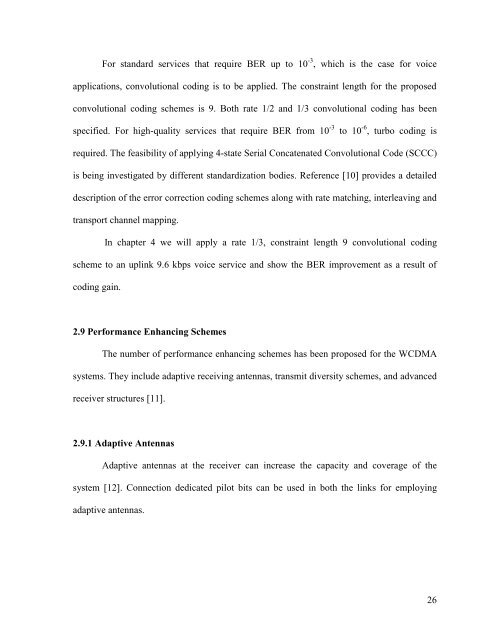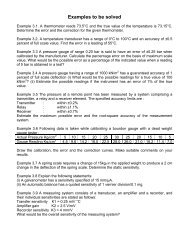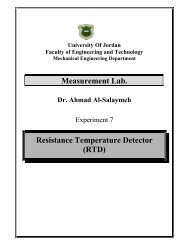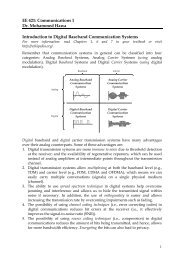Simulation of Third Generation CDMA Systems - Virginia Tech
Simulation of Third Generation CDMA Systems - Virginia Tech
Simulation of Third Generation CDMA Systems - Virginia Tech
Create successful ePaper yourself
Turn your PDF publications into a flip-book with our unique Google optimized e-Paper software.
For standard services that require BER up to 10 -3 , which is the case for voiceapplications, convolutional coding is to be applied. The constraint length for the proposedconvolutional coding schemes is 9. Both rate 1/2 and 1/3 convolutional coding has beenspecified. For high-quality services that require BER from 10 -3 to 10 -6 , turbo coding isrequired. The feasibility <strong>of</strong> applying 4-state Serial Concatenated Convolutional Code (SCCC)is being investigated by different standardization bodies. Reference [10] provides a detaileddescription <strong>of</strong> the error correction coding schemes along with rate matching, interleaving andtransport channel mapping.In chapter 4 we will apply a rate 1/3, constraint length 9 convolutional codingscheme to an uplink 9.6 kbps voice service and show the BER improvement as a result <strong>of</strong>coding gain.2.9 Performance Enhancing SchemesThe number <strong>of</strong> performance enhancing schemes has been proposed for the W<strong>CDMA</strong>systems. They include adaptive receiving antennas, transmit diversity schemes, and advancedreceiver structures [11].2.9.1 Adaptive AntennasAdaptive antennas at the receiver can increase the capacity and coverage <strong>of</strong> thesystem [12]. Connection dedicated pilot bits can be used in both the links for employingadaptive antennas.26
















